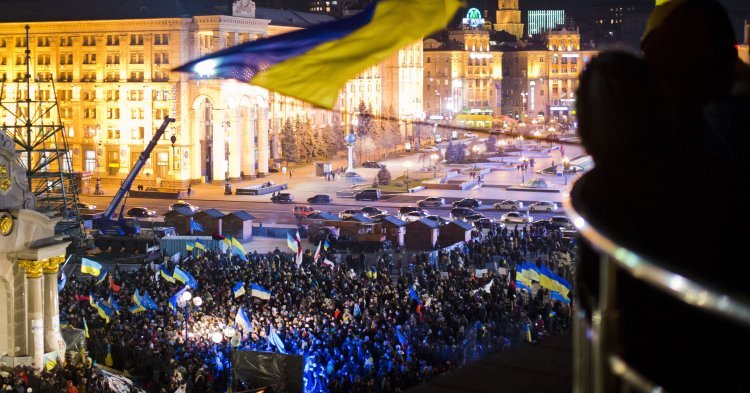It was the usual cold autumn day, and there were no signs that events that would forever be included in world history were about to occur soon. But, that evening, the news that the government refused the planned signing of the Association Agreement with the European Union spread through the Internet. Cancellation of the promised European integration, with which Ukrainians’ hopes for a better future were linked, was prompting people to go and protest on the streets of Ukrainian cities late at night on November 21st 2013. That evening, we had the feeling that this was no ordinary rally, but the beginning of much more important events that would change the country. Thus began the Euromaidan Revolution, during which people for the first time in their history fought under the European flag for their civilisational choice, freedom, and a better life.
Three years have passed since the upheaval and, now, one can outline the major changes that took place in Ukraine after Euromaidan. The most important achievement of the revolution was the implementation of our civilisational choice - the restoration of the path to European integration. Ukraine (and also Moldova and Georgia) signed the Association Agreement in 2014 and its ratification, despite certain difficulties caused by the April referendum in the Netherlands, is nearing its completion. In addition, Ukraine has gone substantially closer to obtaining a visa-free regime with the EU. The implementation of the Association Agreement has started, including launching a free trade area with the EU. As a result, Ukraine’s economy is gradually integrating into the European market. The volume of trade with the EU already accounts for 40% of Ukraine’s foreign trade. The range of European goods markedly increased on the shelves in Ukrainian supermarkets. Another success for Ukraine’s integration into the world community is the Agreement on a free trade area with Canada (CUFTA), which was signed in the summer of 2016 and will come into force next year.
Further, Euromaidan launched large-scale transformation processes in Ukraine. The Europeanisation of the country requires significant changes in various spheres of life and, starting in 2014, comprehensive ongoing reforms have been implemented in Ukraine. In particular, we would note the amendments to the Constitution to strengthen the independence of the judiciary system, the launched decentralisation programmes, the introduction of a system of electronic public procurements, the so-called ProZorro, the formation of a new patrol police force following an American model, the implementation of European standards of food safety pursuing the Association Agreement, the adoption of a new law on higher education to bring the Ukrainian education system in line with more European features, and so on. Also, experienced European reformers, including Leszek Balcerowicz and Ivan Miklos, joined the government’s efforts to transform the country, and surely the implementation of the Association Agreement’s programme on reforms will open the possibilities for the next steps of Ukraine’s integration towards a United Europe.
Euromaidan also became the impetus for the flourishing of Ukrainian civil society, with the creation of many voluntary organizations and innovative non-governmental initiatives. After the intense revolutionary events of Euromaidan, the current changes can sometimes seem slow for us, but we understand that European integration is a long process which eventually will bring the desired results.
Another achievement of Euromaidan was the overdue restoration, in late 2014, of Ukraine’s course to accession to NATO. In the years that followed, one of the most noticeable changes was the transformation of the Ukrainian army from a markedly 20th century army to modern armed forces, willing to contribute to the maintenance of security in Europe and worldwide in partnership with the Alliance. The state programme for the adoption of NATO standards by the Armed Forces of Ukraine by 2020 is being implemented. After the conclusion of the Association Agreement, the accession to NATO, along with Europeanisation reforms, are the fundamental strategic mechanisms for Ukraine to continue on the path to its historical place in a united Europe and a globalised world.
During the Euromaidan, the globalised younger generation of Ukrainians declared themselves, first and foremost, an independent political force. In the course of those events, many young leaders had their voice heard and it is possible that, in the future, they will end up playing a significant role in the Ukrainian and international politics. “Youth of the nation - for European integration!” - That was one of the main slogans of the revolution. We have the experience of travelling in Europe and the world, of communicating with peers from different countries and understand Europe and Ukraine as a united space. And it still depends on us, on our generation, to assure Ukraine’s path to European living standards and the successful entry of our country into Europe and the Globe.

Follow the comments: |
|
